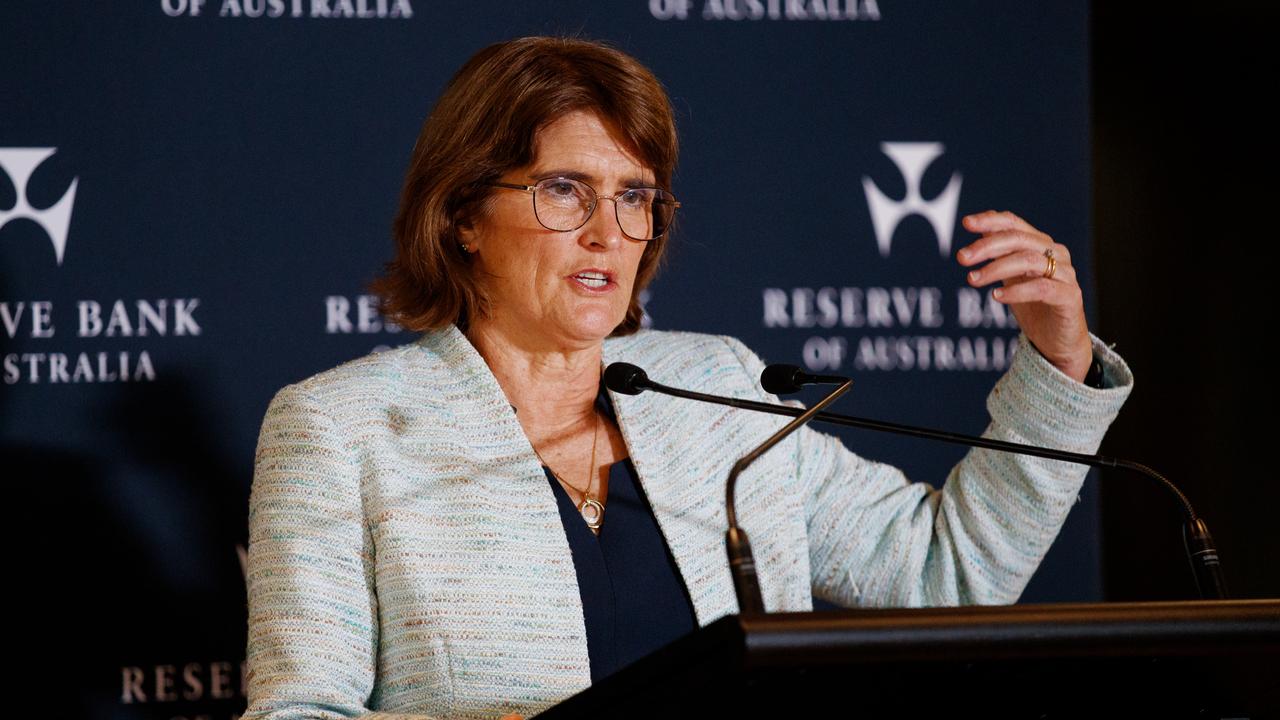RBA’s grim prediction for struggling Aussies
Australians will get no respite from paying high prices for everyday items, the Reserve Bank has warned.
Aussies are being warned to expect continued higher prices for goods and services, with prices “not returning to their pre-pandemic levels”.
Reserve Bank governor Michele Bullock said during a recent ASIC annual forum that the central bank was not going for “deflation”, meaning prices won’t fall.
She said even when inflation eased, consumers could expect permanently higher prices.
“We can bring inflation back down, but to get prices back down to where they were pre-Covid would imply deflation,” Ms Bullock said on Thursday, appearing on a panel at an ASIC conference.

Inflation is a sustained increase in the price of goods and services, and the RBA is aiming for a rise of 2 to 3 per cent a year.
Ms Bullock said the only way prices would fall was if there was a major economic shock, similar to the Great Depression
Deflation is usually the worst-case scenario for an economy.
People usually hold off making purchases, as prices will be cheaper later on, which leads to a shrinking economy, mass unemployment and overall economic damage.
This is exactly what happened during the Great Depression. It’s also why central banks target modest levels of inflation, not zero price changes.
“We’re not going to have deflation,” Ms Bullock said.
Ms Bullock said while most consumers were concerned about price levels and “how much they can buy with their wage”, the RBA’s focus differed.
“We need to keep inflation low and stable so that we keep it in the background, and people aren’t concerned about it.”

“Once it breaks out, and once people see prices rising quickly, then all of a sudden they’re very focused on that.”
According to the latest wage price index, which was released on Wednesday, wage increases outstripped inflation for the 12 months to the September quarter, although pay rises are slowing.
Stats released by the Australian Bureau of Statistics showed wages lifted 3.5 per cent in the year to September, while the consumer price index rose 2.8 per cent in the same period, and the underlying inflation rate remained at 3.5 per cent.
In real terms, that means wages are up 0.7 per cent for the year when compared with the headline CPI.
Treasurer Jim Chalmers said real wages had grown for four consecutive quarters after falling consistently since mid-2021.
“The combination of moderating inflation and stronger and more sustainable wages growth is a good thing for Australians’ pay packets. This is more evidence that there is no wage-price spiral in our economy,” he said.



